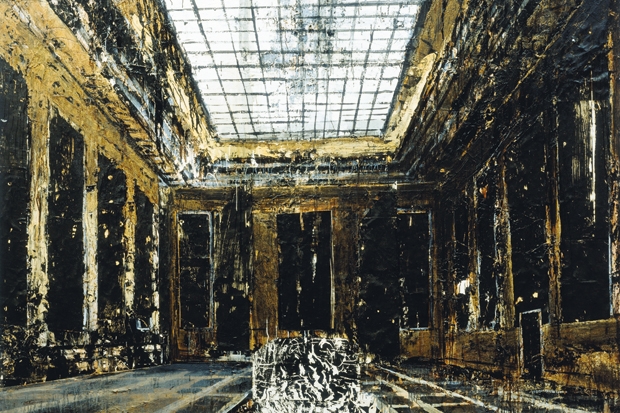At the entrance to Anselm Kiefer’s forthcoming exhibition at the Royal Academy visitors will encounter a typically paradoxical Kiefer object: a giant pile of lead books, sprouting wings. When I asked Kiefer to explain this strange object, he immediately — and characteristically — began talking about alchemy.
Lead, of course, was the material from which alchemists hoped to make gold. ‘But at the beginning,’ Kiefer explained, ‘it wasn’t just a materialistic idea, it was a spiritual one: to transform matter into a higher spiritual state.’ So, I suggested, in a way all art is alchemy: transforming one substance — paint and canvas, for example — into something else entirely. ‘Yes, certainly,’ Kiefer replied.
At 69 Kiefer is widely regarded as one of the most important artists alive, or, to put it another way, a master at the alchemy of metamorphosing all manner of items into something more interesting, and sometimes much more valuable than gold: contemporary art. He is one of a succession of notable artists who emerged from Germany in the 1950s and 1960s, beginning with Joseph Beuys, who was a mentor to the young Kiefer, and including Gerhard Richter and Georg Baselitz. Unlike Beuys, however, who was essentially a performance and installation artist, Kiefer’s work often takes more tangible and traditional forms: painting, sculpture, books, architecture — plus unclassifiable mixtures of one or more of the above.
He deals with epic subject matter. Often his paintings depict a landscape simultaneously ancient and modern, covered with ruins that might be the result of either war damage or the ravages of time: mighty ruined structures reminiscent of pyramids or ziggurats, halls like those of Wagnerian heroes and gloomy funereal vaults derived from the architecture of the Third Reich. From such pictures, lead model aircraft and warships may dangle, and metallic wheat or sunflowers sprout.







Comments
Join the debate for just £1 a month
Be part of the conversation with other Spectator readers by getting your first three months for £3.
UNLOCK ACCESS Just £1 a monthAlready a subscriber? Log in